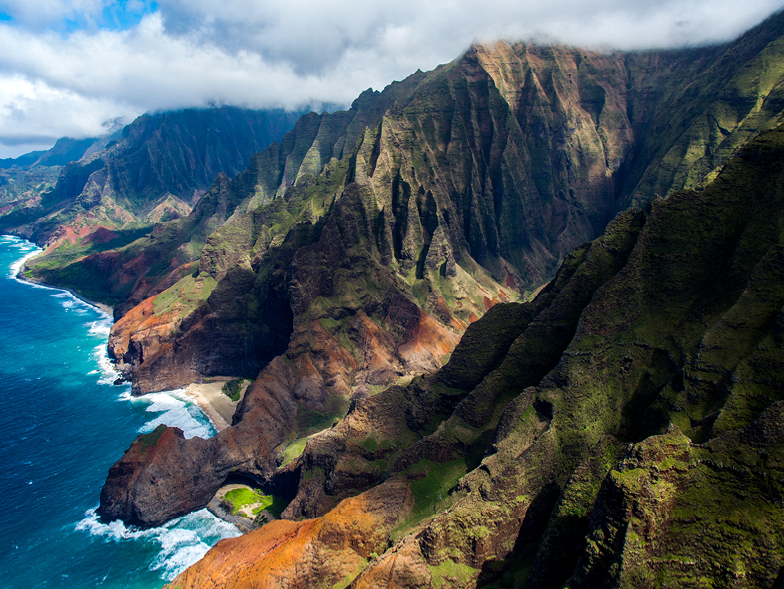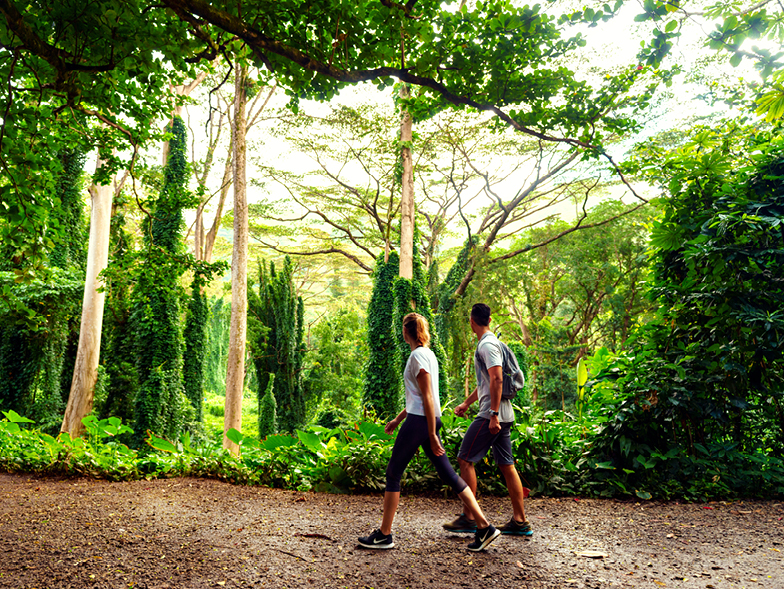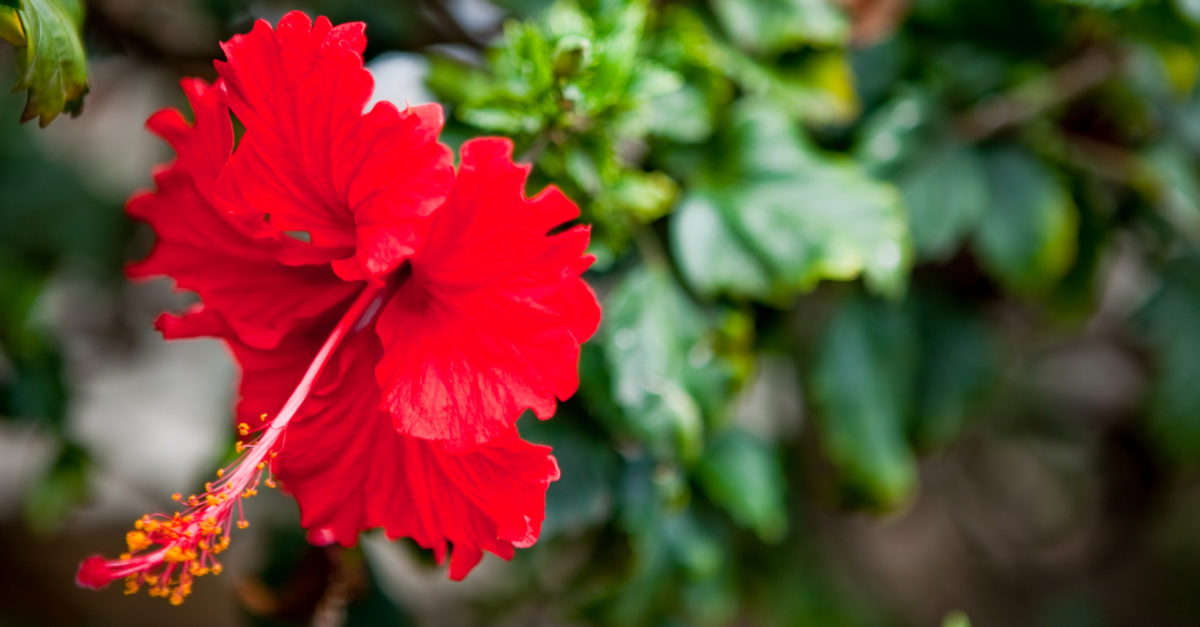Hiking in the Wahi Nani
There are hundreds of reasons why Hawaii is one of the most popular destinations in the world. It’s a place on virtually everyone’s bucket list, and it’s easy to see why.
All this free publicity is both a blessing and detriment. While tourism is Hawaii’s main economic driver, it can be difficult for residents who already must deal with a scarcity of resources and overcrowding of popular attractions, many of which are wahi pana—highly revered and sacred places in Hawaiian tradition.

Recreate Responsibility
The animal and plant life on the islands is unlike anything else on earth. Hiking trails provide a unique opportunity to catch a glimpse of this flora and fauna, including many colorful flowers like the Hawaiian hibiscus and coral creeper and dozens of species of forest birds, such as the ‘apapane and iiwi, not to mention spectacular volcano and ocean views.
Outdoor recreation is one of the most popular attractions on the Hawaiian Islands and helps sustain tourism. But if you plan to visit one of the hundreds of hiking trails or other natural spaces available to the public, you’ll want to make sure you are being respectful of the land. Jackson Bauer, a trails and access specialist for the island of Hawaii, says that one of the best ways to do so is to do your research and understand the sense of place. “It’s not just that visitors are outsiders to Hawaii. Even if you’re a visitor to a community from a different part of the island, there is a level of respect and ethics in Hawaii built in culturally that is an expectation for folks.” With this knowledge in mind, it’s important to ensure that not only are the places you plan to visit safe and legal to go to but that you also exhibit proper behavior while there, including being mindful of posted rules and regulations and respecting the land.
You’ll also want to plan ahead. As previously mentioned, hiking and other outdoor recreation are among the top activities on the islands, so reservations and parking spots fill up fast. A good way to ensure your trip goes off without a hitch is to look up the park’s or attraction’s website that you plan to visit and reserve a time slot. For example, reservations are required to enter Hā‘ena State Park on Kauai’s North Shore because there is limited parking and shuttle availability. “We allocate a percentage of the parking for visitors and another percentage for residents,” says Joel Guy, executive director for the Hanalei Initiative, a nonprofit working to meet the needs of the community and the environment of the North Shore. The park shuttle runs every twenty minutes, but it ends service at noon because of park capacity and to prevent crowding. Return service begins in the afternoon for people who are ready to leave the park.
Park websites typically include information on trail conditions, road closures, and packing tips for your hike, so it’s a good idea to review these sites again before you embark to make any last-minute adjustments.

Places to See
Whether you’re planning to visit just one of the Hawaiian Islands or several, you can rest assured that every day will be a new adventure. These islands vary in landscape, wildlife, and even climate, and, depending on how far you’re willing to venture, you might be able to experience multiple types of environments on the same day.
Hawai’i (the Big Island)
Hawai’i is the largest island in the Hawaiian Island chain and was the last to form, making it a geologic hot spot of activity. The island has four completely different climates, ranging from tropical to polar at its highest elevations.
Volcanoes National Park
What would a trip to Hawai’i be without a close-up look at its volcanoes? Volcanoes National Park is home to two of the most active volcanoes in the world—Kīlauea and Mauna Loa. Visitors can opt for a hiking or road tour depending on how close they want to get to the action.
Pololū Valley
If you’re looking for a hiking experience with beautiful ocean views, a trip to Hawai’i’s Pololū Valley is in order. December through March is a particularly spectacular time to visit as it is peak season for migrating humpback whales. The valley’s main trail, the ‘Awini, is short but steep, and the area is a wahi pana, so it’s important to use caution and stay on the trail at all times.
Oahu (the Gathering Place)
Oahu is made up of five distinct regions and is known for the contrast between its busy city life in Honolulu and its laid-back North Shore.
Kaena Point Trail
Kaena State Park trailheads can be accessed from two different points in Oahu, from the leeward (west) side of the island or the Mokulēia coastline of the North Shore. Both hikes are about 2.5 miles in length and offer incredible views of the island’s rocky coastline.
Manoa Falls Trail
There are, of course, plenty of incredible waterfalls to visit on Oahu. However, Manoa Falls is the biggest and one of the most accessible to visitors. The trail that takes you there is located on one of the rainiest parts of the island, so hikers should prepare to navigate damp and muddy conditions. The journey is well worth it, though, for its awe-inspiring views of the hundred-year-old bamboo forest.
Kauai (the Garden Island)
As the oldest of the Hawaiian Islands, Kauai’s mountains and forests have been evolving over centuries. Its landscape is lush, green, and dramatic— making it the perfect place to explore some of the world’s most interesting natural wonders.
Hāʻena State Park
There is something for everyone in Hāʻena State Park along the island’s North Shore. At eight miles long, the hike from the trailhead to the Hanakāpīʻai Waterfalls is lengthier and more challenging than some other hikes on the island, but it offers incredible views of waterfalls, beaches, and valleys. Be advised that the trail is extremely popular and requires both park entry and parking reservations for nonresidents.
Kōkeʻe State Park
There is no better place to experience Kauai’s wildlife than in Kōkeʻe State Park. There are over forty-five miles of trails to explore full of lush vegetation and some of Hawaii’s most recognizable native flowers and plants. The park is also a short distance from the incredible Waimea Canyon—a 3,600-foot-deep gorge often described as the “Grand Canyon of the Pacific.”
Whether your eyes are looking mauka (toward the mountains) or makai (toward the ocean), you’ll discover so much beauty to behold in Hawaii, and the state’s hiking trails are some of the best places to experience it in all its grandeur.
For more info, visit gohawaii.com









